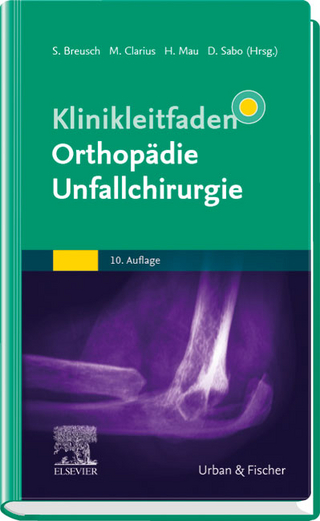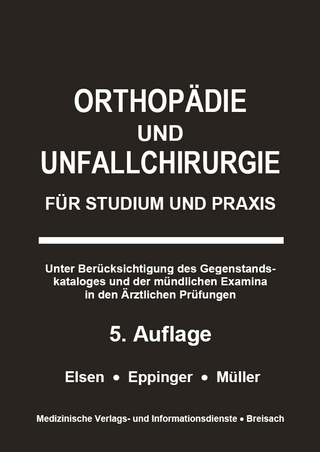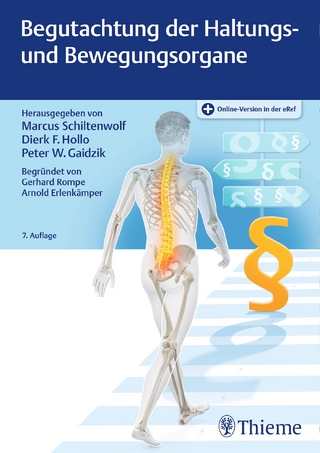
Manual of Cementing Technique
Springer Berlin (Verlag)
978-3-642-64246-3 (ISBN)
This extensive and well-prepared manual is the work product of Klaus and Yvette Draenert, who are deeply interested in cemented total hip arthroplasty and in partic ular, intensely involved in related research for the past 25 years. Their damage analysis is aimed at cement fixation with the purpose to rule out any risk for the patient. They introduce the theme with a wide review of the literature on the successes and failures of the various types of total hip components. Because of the lack of standardization of the various parameters used in these studies, they do not recommend anyone spe cial type, and on the basis of this literature study they wonder why there is such a se arch for new types and (fixation) methods of total hip arthroplasties. Instead of these long-term follow-up studies, the authors plead to carry out syste matic histological research on retrieved human material as was firstly started and re T. /. /. H. Slooff commended by the late Sir John Charnley. Their investigations demonstrate that po lymethylmethacrylate behaves biologically as an inert material that can be integrated into the bone, without a fibrous membrane interface. This could also be assessed in their animal experiments when the appropriate biomechanical conditions are pro vided. To achieve a connective tissue free bone-cement junction it is important to pre vent deformation in the bone structures and micromotion between the bone-cement interface.
1 Historical Background.- 1.1 Conditions Before Charnley.- 1.2 John Charnley.- 2 Histomorphology of the Bone-to-Cement Contact.- 2.1 The Cemented Total Hip Arthroplasty.- 2.2 Histomorphology of the Bone-to-Cement Contact (Animal Experiments).- 2.3 Histomorphology of Human Samples.- 3 Can Cancellous Bone Carry the Load?.- 3.1 About the Deformation Behavior of Spongiosa.- 3.2 Deformation of Bone Through Different Implants.- 3.3 Stiffening of Spongiosa with Bone Cement.- 4 Approach to the Hip Joint.- 4.1 Posterolateral Approach.- 4.2 Transgluteal Approach.- 5 Preparation of the Acetabulum.- 5.1 Preparatory Steps.- 5.2 Exposure of the Acetabulum.- 5.3 Fossa Acetabuli.- 5.4 Preparation of the Bony Acetabulum.- 5.5 Anatomical Composition of the Joint Surface of the Acetabulum.- 5.6 Lavage, Anticoagulation and Stiffening of the Acetabular Roof.- 5.7 Inclination and Alignment.- 6 Preparation of the Bone Cement.- 6.1 Advantages of Standard Viscosity Bone Cement.- 6.2 Cold Storage as a Simple Method To Achieve a Temporarily Lower Viscosity.- 6.3 Homogeneous and Bubble-Free Mixture.- 6.4 Prepressurizing Bone Cements, a Conditio Sine Qua Non.- 6.5 Application of the Bubble-Free Bone Cement.- 7 Preparation of the Femur.- 7.1 Opening of the Medullary Canal and Implantation Axis.- 7.2 Surgical Diamond Instrumentation.- 7.3 Drainage of the Medullary Canal.- 7.4 Preparation of the Implant's Bed.- 7.5 Lavage.- 7.6 Plugging the Medullary Cavity.- 7.7 Heparinization, Cementation, and Implantation.- 8 Scientific Background of Vacuum Application.- 8.1 The Problem of Thromboembolism and Drainage of the Medullary Canal.- 8.2 The Distal Drill Hole.- 8.3 The Stem-Canal Volume Relationship.- 9 Consideration of the Prosthetic Design of the Femoral Stem.- 9.1 Stiffening Spongiosa of the Femur.-9.2 Calcar Femoris.- 9.3 Stem Design.- 9.4 Preoperative Planning.- 9.5 Centralizing Anatomical Design.- 10 Instrumentation.- 11 Conclusions: The Success of Cemented Components.- 11.1 First-Generation Cementing Techniques.- 11.2 Success of the Cemented Component Is Due to Stiffened Bone Structures.- 11.3 Cancellous Bone Stiffened by Bone Cement Can Survive.- 11.4 Preservation of Cancellous Bone.- References.- Author Index.
| Erscheint lt. Verlag | 22.2.2012 |
|---|---|
| Zusatzinfo | XII, 114 p. 112 illus. in color. |
| Verlagsort | Berlin |
| Sprache | englisch |
| Maße | 155 x 235 mm |
| Gewicht | 212 g |
| Themenwelt | Medizinische Fachgebiete ► Chirurgie ► Unfallchirurgie / Orthopädie |
| Medizin / Pharmazie ► Medizinische Fachgebiete ► Notfallmedizin | |
| Schlagworte | Bone • complication • Fixation • orthopaedic surgery • Surgery • trauma surgery |
| ISBN-10 | 3-642-64246-2 / 3642642462 |
| ISBN-13 | 978-3-642-64246-3 / 9783642642463 |
| Zustand | Neuware |
| Informationen gemäß Produktsicherheitsverordnung (GPSR) | |
| Haben Sie eine Frage zum Produkt? |
aus dem Bereich


